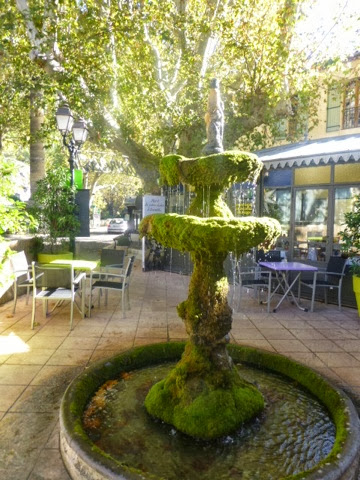I've always wanted to come to Barcelona to see the works of the famous aechitect Gaudi. But i had no idea that this city of almost two million people is so gorgeous and so liveable. It has 13 kilometers of Mediterranean beaches, a Medieval quarter and dozens of gorgeous plazas where you can get a reasonable glass of dry Spanish wine or an excellent coffee at a price way less than in Paris. That's not to mention the weather: on September 20 people are swimming at the beach and it's hovering around 23 degrees C or 74 F.
Today we took a tour on one of those hop-on-hop-off buses. This is something we've never done before, as we try to take public transit or walk around to explore new cities. I have to say I'm a convert, at least when it comes to a place with as much to see as Barcelona. Today we visited Barcelonetta, a beachy fisherman area, where I dipped my toes in the Med and then we had a fishy lunch in a tiny little neighbourhood bar/ restaurant.
This cost us 8 euros and was preceeded by a plate of crispy sardines. My pleasant wine was 1.50 a glass!
We got back on the bus and hopped off at Sagrada Familia, the masterwork of Gaudi that is still being worked on.
The surprise there was that some kind of amazing festival was taking place. Behind the chuch the street was closed off and people were gathered around watching a contest. A team of people dressed in blue and red gathered in the middle and
made a circle of raised hands.
Then others climbed on top to create a kind of tower.
Then more climbed on top, and more, culminating with young children wearing helmets. Here's the completed tower with the last girl cimbing to the top.
Once the tower is completed the children slide back down, followed by the rest.
It turns out this is a time-honoured contest between different teams, called castellers, that compete to make the tallest tower. There are nine teams in the city. Here's another team's entry. Isn't that amazing? I think this is a Catalan tradition.
We are learning more about this Catalan culture that dominates Barcelona. There is a strong separist movement here, in fact last night when we arrived there was a peaceful demonstration just outside our hotel.
We've learned that the Catalan language is now used here in city notices, in the media and in the schools. There are Catalan flags hanging off many balconies. Yet the city is very international. The tour bus had the option of 16 different languages.
Tomorrow we have another bus tour day. Who knows what treasures we will unearh.

























































